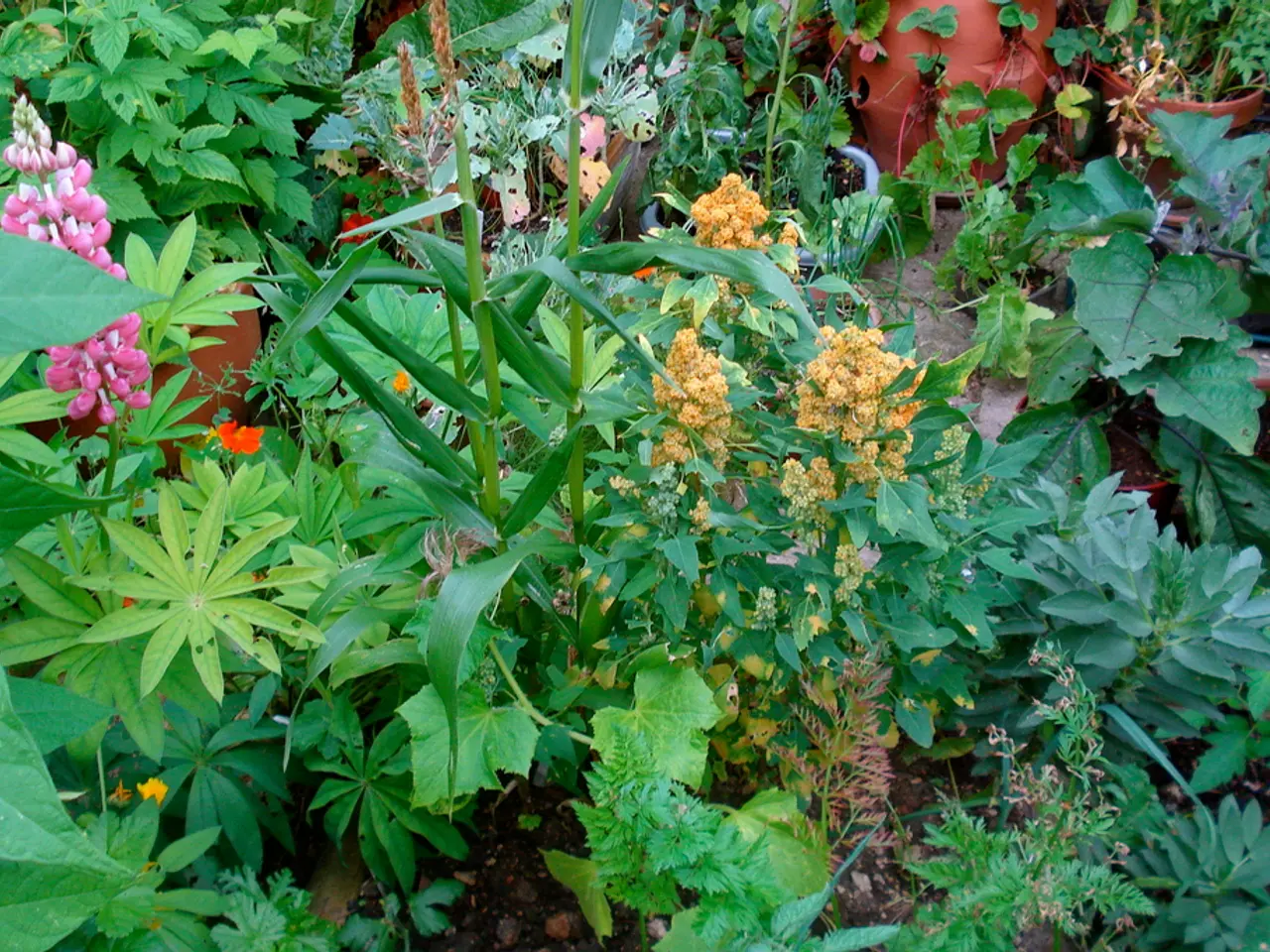Properly Tending and Cultivation Tips for Portulaca Plant Varieties
=========================================================================
Discover the charm of Portulaca, a vibrant and hardy plant that thrives in hot and dry environments. Known as Moss Rose or Purslane, these plants are favoured for their succulent leaves that store water, enabling them to flourish in drought-prone gardens or sunny landscape spots.
Portulaca plants, with the botanical name Portulaca grandiflora, are versatile and low-maintenance, making them an ideal choice for dry climates. They can withstand prolonged periods of heat and humidity variations, making them resilient even in the harshest conditions.
The Spread of Portulaca plants ranges from 6-12 inches (15-30 cm.), making them suitable for various garden spaces. They benefit from routine watering during the growing season, but their drought-tolerance means they can survive with minimal watering.
Some popular varieties include the Happy Hour™ Tropical Mixture, known for its fuller habit and large, semi-double blooms in vivid colours. These flowers bloom late spring through summer, creating a lasting spectacle in your garden. Another popular variety is the Wingpod Purslane (Portulaca umbraticola), which is a low-growing ground cover that attracts pollinators and is often used as a low-maintenance ground cover.
Pruning Portulaca plants is minimal, as they self-clean and drop faded blooms freely. However, shearing mid-way through the summer season can benefit the plants by refreshing foliage and encouraging the production of flowers into fall.
Portulaca seeds can be sown indoors or directly into prepared beds after the risk of frost has passed in the spring. Mixing seeds with sand can aid in their more even distribution. Seeds should begin to germinate after one week from planting, with consistent warmth and moisture.
Portulacas grown in frost-free regions can overwinter outdoors with minimal care, while those grown outside of their hardiness range will succumb to cooler temperatures if not intervened. Hardiness zones for Portulaca plants (annual) range from USDA Zones 2-11, while those grown as perennials thrive in USDA Zones 10-11.
If overwintering indoors, potted Portulacas should be moved before the first frost of the season and placed near a sunny window, kept warm throughout winter. Portulaca plants that have outgrown their containers can be repotted into larger ones, with each new container being approximately twice the depth and width of the plant's root ball, filled with a high-quality potting mix, and having adequate drainage.
Routine feeding throughout the growing season will help Portulacas produce flowers, and plants that have become tall or leggy may benefit from shearing to help revitalize the plant and promote the production of new buds. The sun exposure required by Portulaca plants is full sun.
In conclusion, Portulaca plants are a vibrant and colourful addition to any garden, particularly in dry climates. Their drought-tolerance, heat resistance, and low-maintenance nature make them an excellent choice for those seeking hardy, attractive plants that require minimal care.
Read also:
- Premium Automobiles Worth Investing in for 2025
- Enhance Resilience through Varietal Crop Planning in Permanent Agriculture
- Government advises citizens to delete old data like emails and photos to conserve water during severe drought, explaining that data centres use water extensively for cooling their systems.
- Continuous Monitoring: Key Components of Public Access Cameras




